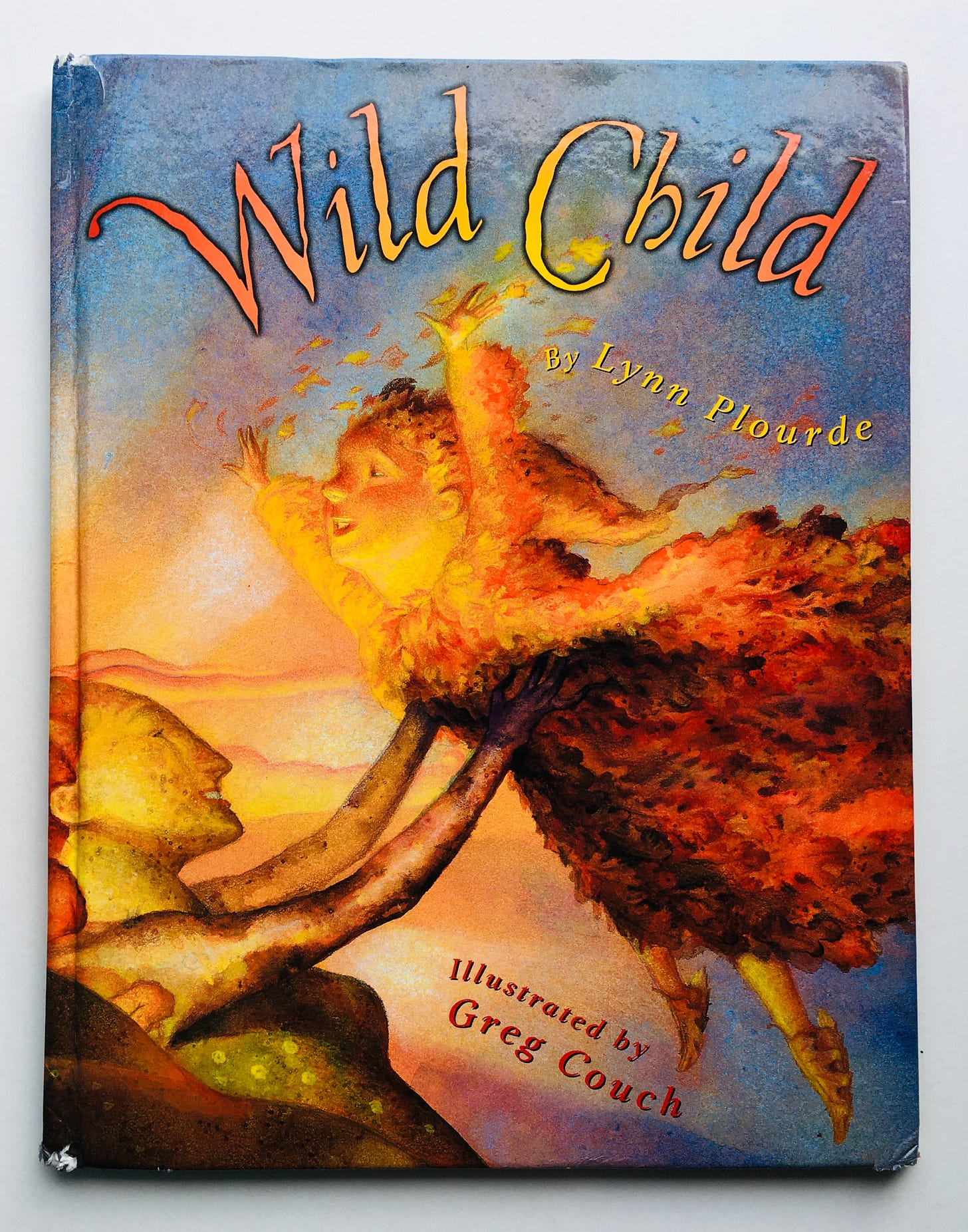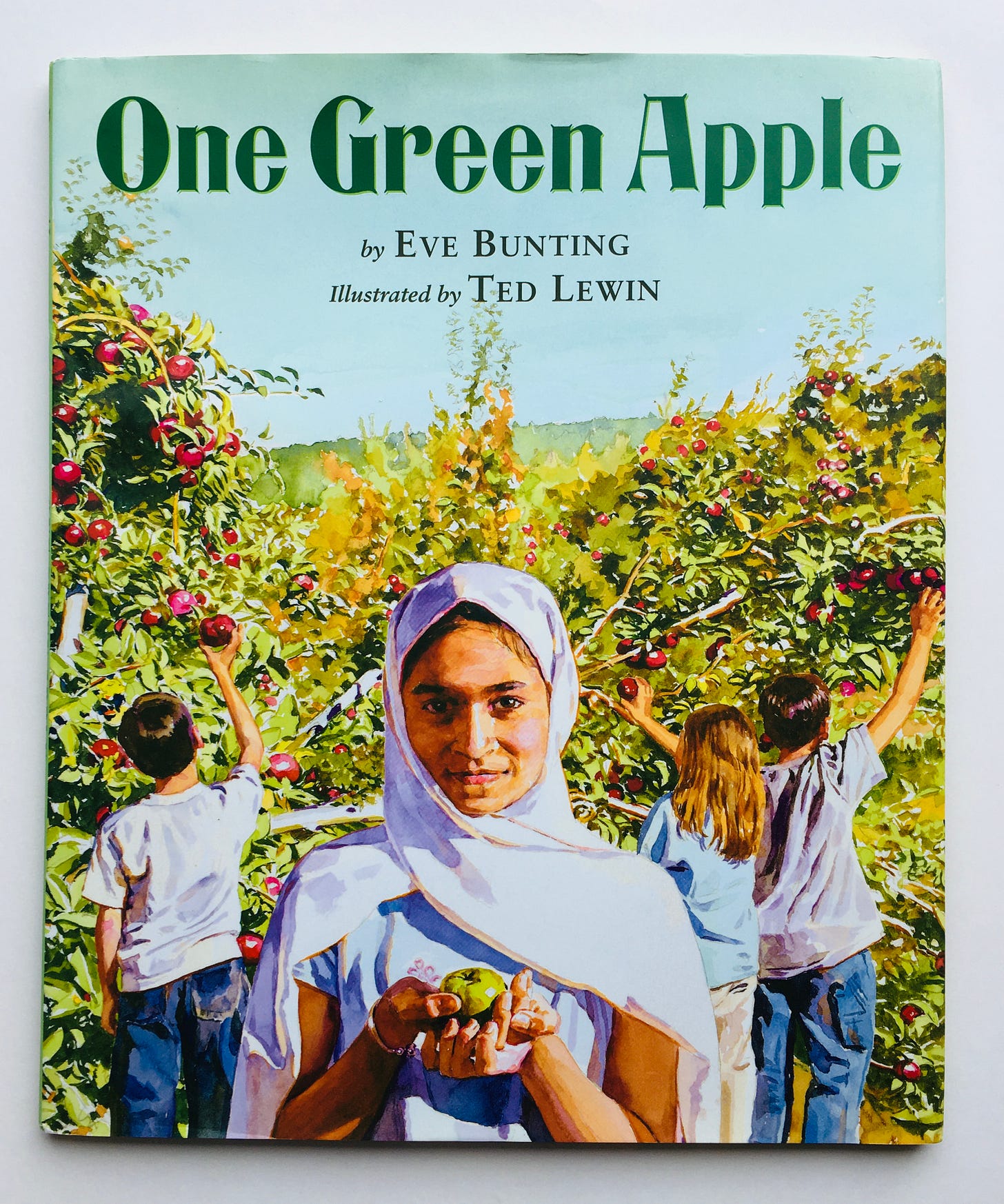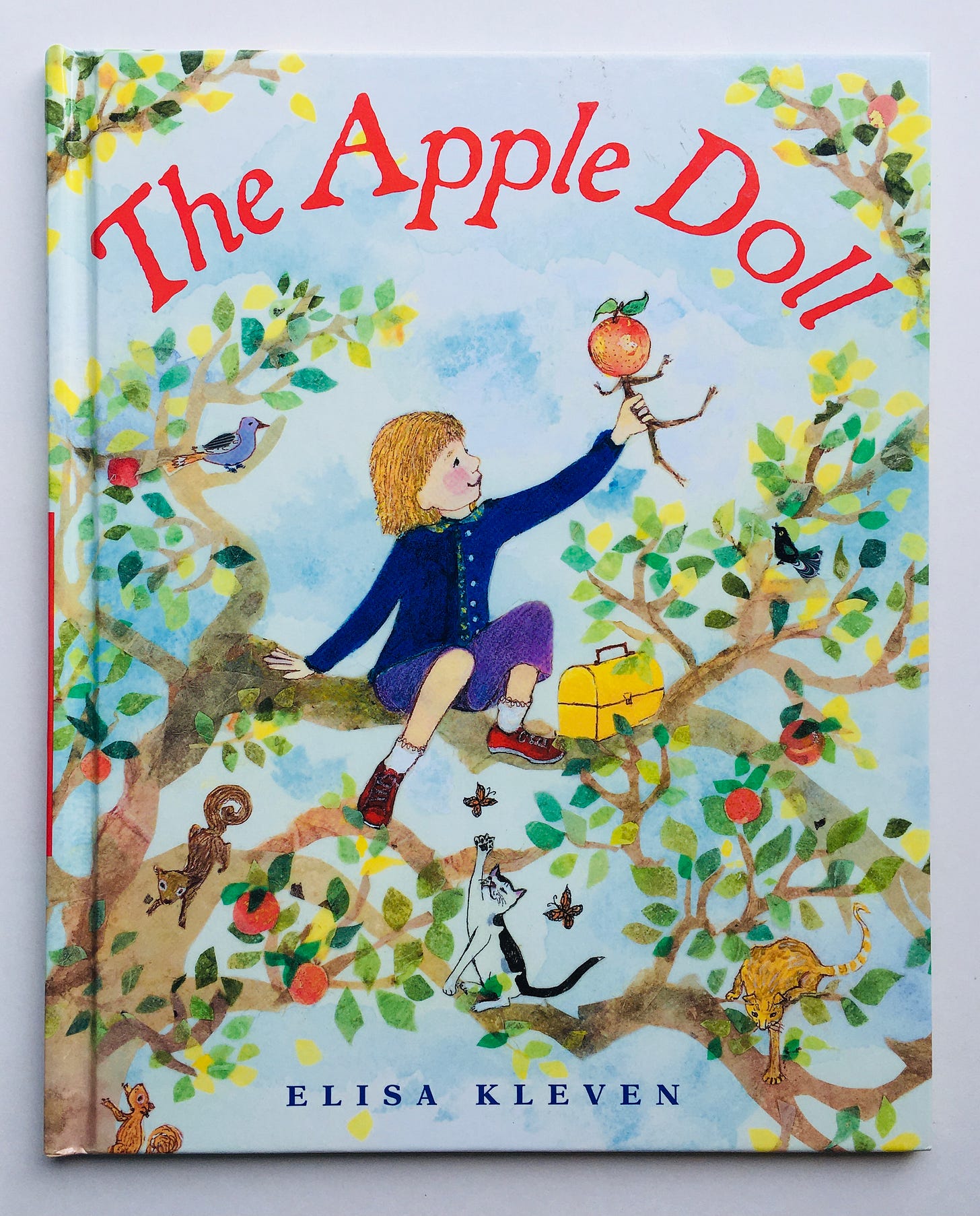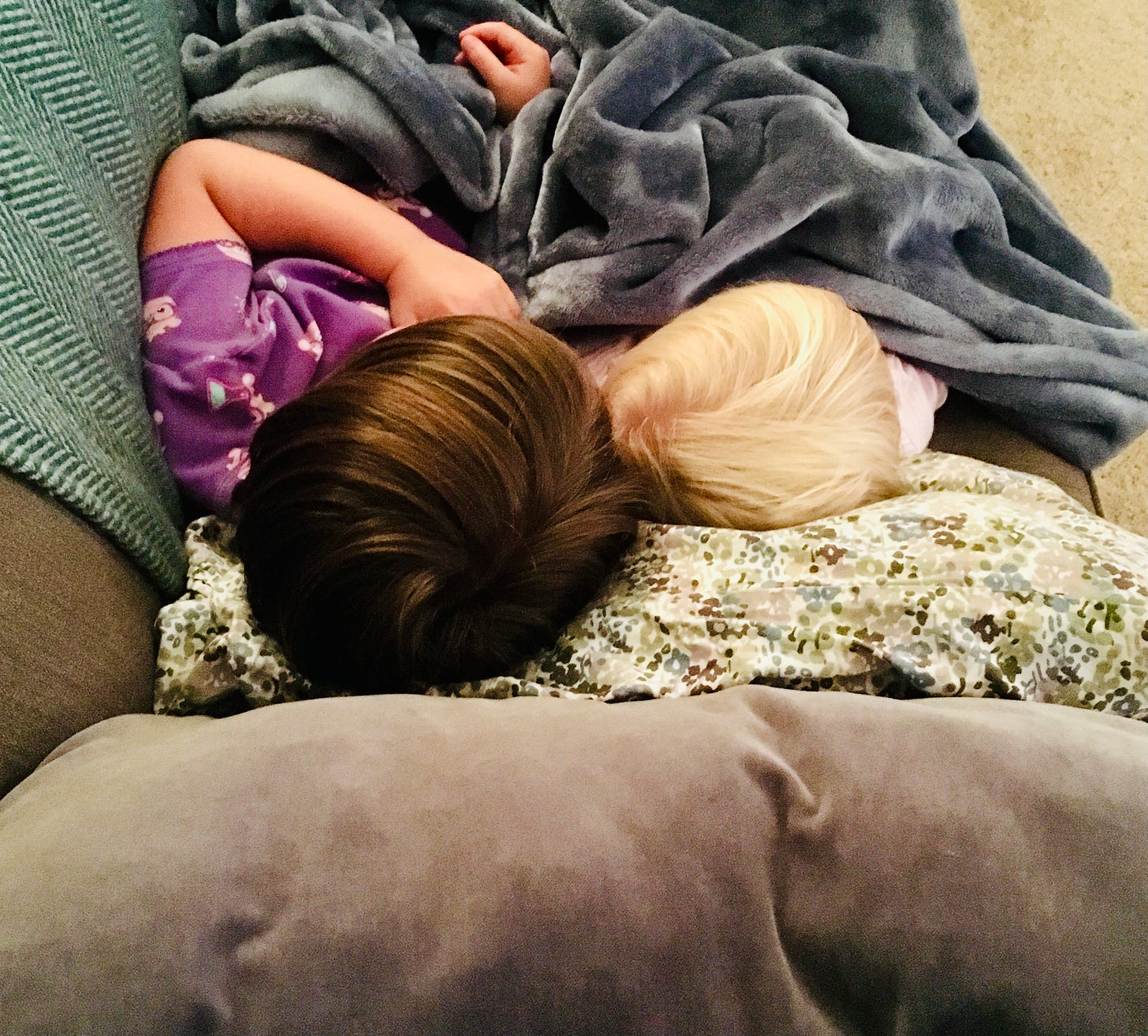Fall!
I am always happier than a squirrel with a nut when fall arrives. I embrace all of it, especially the oncoming cold and dark, which I genuinely look forward to every year because I’m not only an introvert but also a homebody, and frigid darkness is a good excuse for both.
(Also it’s Virgo season, which means all of my wonderful/annoying/wonderfully annoying qualities — my ability to see all the problems with everything and make plans and spreadsheet as a verb and work like a monster on whatever it is I feel like creating until it is so, just to name a select few — are, like, momentarily admirable traits. Chani Nicholas doesn’t call this Beyoncé Season for nothing — it’s big energy that aligns with the same type of energy I can usually only barely contain inside of me, and I love this time.)
I love decorating for all the holidays, I love the first fires in our fireplace (even if it means many hard, dirty hours of carrying in load after load after load of wood). I love the way my hair starts freezing when I walk to the parking lot after being in the pool, I love the unpasteurized cider from our apple CSA, I love fleece jackets and wool slippers and the Sunday I decide it’s time to make the bed with my flannel sheets printed with small-mouth bass. I love constellation walks and lantern walks and the first snow. I love the way the sunlight slants sideways, gold and orange against a sky so brilliant it makes me wish for a thesaurus dedicated solely to the color blue.
What I like most about fall is that it brings winter along on its back, in fits and starts, one day at a time, but it has its own sweetness, too.
So I had great fun preparing this issue for you, as it gave me a reason to look forward to, well, just being who I am, and to all those good things that fill me up and help me stay whole, in the midst of a time when that feels pretty dang hard and I’m having to dig deep to stay optimistic.
Before we start: I encourage you to take a peek at my special edition on fall from 2020 — there are some great books there, some of my favorites, really, and I’d hate for you to miss them.
Now let’s bite right into this issue, shall we? 🍎
Wild Child by Lynn Plourde, illustrated by Greg Couch (2003)
It occurs to me as I begin this that I have never once mentioned Lynn Plourde’s “Mother Earth” series in this newsletter and what a travesty that is — not only as these some of our very favorite seasonal books, they are excellent and well worth adding to your permanent collection.
Each book focuses on the turning of the year in a lovely lyrical way — here, in autumn, Wild Child’s mother (Earth) is trying to put her to bed, but like billions of children all over the planet, this kiddo is stalling: she needs a song, a snack, her pajamas and one last, heart-tugging request (I’ll give you a hint: my 4yo has perfected the art of kissing me and saying sweetly, “I love you, Mama” right when I am about to blow my top, and Wild Child knows this trick as well).
Plourde’s language is a delight — she uses all the techniques that make text a joy to read aloud, including rhyme, alliteration, repetition, and onomatopoeic made-up words (“Puckery, smuckery, crimsony cranberries”) — and matched with Couch’s whimsical, ethereal illustrations (liquid acrylic paint on museum board, which is just dreamy), this team somehow captures all the beauty of autumn in its fullest, richest glory.
If you only check out one new book this season, make it this one.
Berry Magic by Teri Sloat and Betty Huffmon, illustrated by Teri Sloat (2004)
According to an interview with the authors in Native People’s Magazine, the genesis of Berry Magic was “a very short story told out loud to Yup’ik children to explain the origin of berries.” Huffmon grew up with the story as part of her Native childhood and Sloat heard it during the many years she lived in a small Yup’ik village in rural Alaska.
Together they collaborated to create this bright and utterly delightful pourquoi tale (a story that explains why something is the way it is) wherein a young girl named Anana, upon hearing her elders complain about the hard, tasteless crowberries of the tundra, sets out to solve the problem with magic.
First Anana makes a set of four dolls, each from different materials with different defining features; each wearing a different colored pelatuuk (head covering) — one red, one blue, one orange, one rose. She brings the dolls to a nearby hill, and, using her dance fans and singing a Yu’pik berry song, conjures a real live girl from each of the dolls. As the dolls roll down the hill they leave berries behind them: the red doll-girl brings cranberries; the blue, blueberries; the orange, salmonberries; and the red, “sweet rosy raspberries.” Anana, filled with joy, brings news of the berries back to her elders, who will now be able to prepare akutaq (a traditional indigenous sort of ice cream made with fat, sugar, berries, and whitefish) for the fall festival.
Sloat’s cheerful colored pencil illustrations complement the energy and joy of this tale, which contains not only fabulous messages about problem-solving and devotion — Anana is a determined character whose love for her people and her culture shine through her generous actions — but also a charming layer of magic that’s just ordinary enough for children to believe.
This is a fun, unique fall read — I encourage you to seek it out and soak up its sweetness for yourself.
🗒 A note: the word “Eskimo” does appear once in the initial pages of this title. Since it was co-authored by someone of Yu’pik heritage, I wanted to lean toward trusting its usage; however, I looked up some information about the words “Eskimo,” “Yupik,” and “Yu’pik” on the Alaska Native Language Center page on the University of Alaska-Fairbanks website and learned that the different terms have different meanings in different contexts. Still, as the UAF page states, “Eskimo” is fading from use and so I change the language when I am reading aloud to my children to “Yu’pik” instead.
One Green Apple by Eve Bunting, illustrated by Ted Lewin (2006)
Farah is the new girl, on a field trip on her second day of school in a new country, and she feels alone and isolated even when surrounded by classmates. She doesn’t know the language and doesn’t speak, though she understands enough to overhear her country mentioned, “not fondly,” and she notices that she is visibly different in a variety of ways. Some children are kind, some are not, some things are familiar from home, some are not, but mostly it’s tough going all around until Farah and her classmates pick apples and make cider together, and slowly but surely, forge a connection and create a genuine space for Farah to belong.
Bunting handles the experience of a young Muslim immigrant with exceptional sensitivity here — I don’t know how anyone could read this story without a sense of empathy. And though she could have easily opted for the cliché of everyone accepting one another without question, she didn’t — instead she reveals all the difficulties of the situation, all the complex feelings of everyone involved, and the honesty feels fresh and just right. Add to this Lewin’s luxuriant watercolors, teeming with small details (his dappled sunlight is marvelous) and the depth of emotion here is remarkable.
This is a beautiful book that belongs on the shelf of every elementary-aged child — or anyone else who cares about walking a mile in someone else’s shoes.
The Apple Doll by Elisa Kleven (2007)
“Lizzy loved her apple tree,” spending lots of time throughout all the seasons high in its branches. When it’s time to start school, she confides to one of the apples that she’s scared and she pretends that the apple whispers back: “I’ll be your friend.” Lizzy names her apple Susanna, gives her a body of sticks, and brings her to school.
Neither her classmates nor her teacher understand that Susanna is neither food nor a toy and on top of that, Susanna isn’t quite the fresh-faced apple she was the other day. Lizzy enlists the help of her mama, and together they dry Susanna and make her into a real apple doll. When Lizzy shares the new Susanna with the kids at school everyone wants one for themselves, inspiring not only a lesson on apple-doll-making but a handful of new friendships as well.
As ever, Kleven’s jam-packed, kaleidoscopic blend of color and texture is deep and rich (she uses watercolor, colored pencils, ink, crayon, and collage — a melting pot of media that results in a tiny world that invites children to dive in and spend a lot of time looking around, which, if my own children are any indication, they are more than happy to do). But my favorite part of this book is Susanna — after her transformation into a genuine apple doll (there are directions included in the back of the book for how to do this yourself), she is old, and the way in which her age is treated is not only striking but absolutely refreshing.
“She looks old,” said Papa, “and very happy and strong…”
“What if the other kids tease her?” asked Lizzy.
Jill held Susanna up like a puppet. “Tease such a strong, happy, wise old woman?” she asked. “Never!”
It’s a rare book that paints old age in such a positive light (especially rather than framing it as “respecting one’s elders,” which is of course important but not by any means the last word on growing older), and I cherish this book for this reason above all.
That children delight in reading this charming, kind tale is a bonus, but a pretty good one.
Like what you’re reading? Become a paid subscriber and never miss a special edition!
The Owl and the Woodpecker by Brian Wildsmith (1971)
Owl and woodpecker have a serious problem with one another — they’re neighbors but they are not friends. Woodpecker likes to work all day and sleep all night, Owl likes to work all night and sleep all day, and since they live in trees right next to each other, it’s an untenable situation.
Eventually Owl loses it, and the duo’s disagreement captures the attention of the whole forest — the animals try to help problem-solve and keep peace but negotiations degenerate until Owl and Woodpecker are no better off than where they started. It seems there is just no solution, until a terrible storm brings down Woodpecker’s tree, and he has to seek help from the unlikeliest source — Owl, who gives it freely — and foes become friends.
If this is your first introduction to Wildsmith’s vivacious and, well, wild oil paintings, you’re in for a treat. His illustrations are always bold, always inventive, and it’s as if his foremost ambition in creating images for his books was to capture the ontology of the animals he depicts — meaning that looking at a Brian Wildsmith woodpecker is also, somehow, looking at the woodpecker-ness of a woodpecker. He just nails the animated life force of his illustrated creatures, and this title is no exception.
That it’s an amusing and entertaining story full of all kinds of worthwhile messages about tolerance, conflict, and friendships forged in fire is almost secondary. Almost. This one is best for preschoolers, or anyone who sometimes struggles to get along with someone else — so, you know, all of us.
(Another Wildsmith read for fall that I highly recommend is Squirrels — it’s nonfiction, and beautifully done.)
Pumpkin Baby by Jane Yolen, illustrated by Susan Mitchell (2009)
My favorite part about Pumpkin Baby is a personal one — I see a brown-haired big sister and a blond-haired little sister every single day of my lucky life, and I originally found this book when they were as young and tiny as these characters.
But its appeal for others, especially those with toddlers, lies in its adorable, fanciful story: a young girl wonders about a potential baby, imagining it, as she grows slightly older, as all kinds of different things: a pumpkin, a cabbage, and a stork. She asks herself over and over if she could love this child.
Yolen’s repetitive sentence structure, coupled with Mitchell’s sweet watercolors make this a gentle read full of innocence. The littlest readers — and their grownups — will be happy to know that when a baby finally arrives, and he grows from the size of a cabbage to the size of a stork, the big sister’s question (“Would I, could I, ever love a pumpkin baby?”) gets answered: and the answer is YES.
The Bat Poet by Randall Jarrell, illustrated by Maurice Sendak (1964)
The Bat-Poet doesn’t look like much from the outside, even with the teaser of “pictures by Maurice Sendak,” which are in truth some of his more classical work and far less like Where the Wild Things Are, et al, than one might assume: but the underwhelming vibe of the cover doesn’t do any kind of justice to the simple, rich story therein.
This is, as the title states, a story about a little brown bat. He’s different from his family, all tucked up under the eaves on a porch night after night, in that he keeps waking up and looking out at the world, noticing all the things around him that make it a wild and wonderful place. He wants to help his brethren understand this — to share in his wonder — but they simply don’t have the eyes to see. So he goes out, seeking others who might understand — he has a run-in with an owl that almost becomes fatal; he meets an obnoxious and self-important mockingbird who teaches him what poetry is (and inspires him to begin writing his own poems); and finally he finds a patient chipmunk, who serves as both enthusiastic audience and curious friend.
There is not, I must admit, rapid narrative momentum here — and yet, there is enough action to interest young children, coupled with beautiful descriptions of nature, animals, and their thoughts (I would expect nothing less from Jarrell, who is some kind of strange genius when it comes to writing the interior world of animals — see our favorite title of his, The Gingerbread Rabbit, which I reviewed in my special edition on Easter earlier this year). When I plucked this out of my fall seasonal box to share with my daughters I was skeptical as to their reception — I was willing to abandon it quickly if they just weren’t feeling it — but as usual their ability to not only handle but truly appreciate beautiful literature surprised me.
They enjoyed hearing about the bat’s exploits — and poem-making — because it is a quietly lovely story, and we humans tend to like that.
Apples and Butterflies by Shauntay Grant, illustrated by Tamara Thiebaux-Heikalo (2012)
There are some lovely fall poetry titles out there, but this is the one I most like reading aloud to my children.
Apples and Butterflies is a narrative poem that tells the story of one family’s autumn trip to Prince Edward Island — so, not necessarily your typical fall scene — but what I like about it is that every page, every line, really, is infused with all the sensorial details of this season, making dipping into this book as sweet and satisfying as the first bite of applesauce.
Grant’s prose flows well from page to page and scene to scene, offering a unique look at a beach after summer is done — the children are dressed for cooler weather and the pleasures to be had are found in the sand (“where sandpipers sift through seaweed searching for snails” — I will never tire of alliteration) rather than the water, and they are, in some ways, simpler (“I just want to breathe / breathe air that tastes like apples / red, ripe, and ready for picking”).
Thiébeaux-Heikalo’s lush, realistic acrylics create a soothing atmosphere full of the joys of both family life and vacation — a bit of a reminder that we can access these feelings any time of year— that leave readers big and small with a sense of coziness and comfort, and an awareness of the peace to be found in the regular turning of the seasons.
Also highly recommended
Autumn Story by Jill Barklem (this might be my favorite of the Brambly Hedge seasonal stories, which is really saying something)
Hurry, Hurry, Mary Dear by N. M. Bodecker (this sparked a lot of conversation about equitable division of labor in a marriage/partnership — and laughter)
How Chipmunk Got His Stripes by Joseph Bruchac and James Bruchac
A Pipkin of Pepper by Helen Cooper
Six Crows by Leo Lionni
Barn Dance by Bill Martin, Jr. and John Archambault (I reviewed this in issue No. 4)
How Many Seeds in a Pumpkin? by Margaret McNamara (an excellent living math book)
Hiking Day by Anne Rockwell
Rain Makes Applesauce by Julian Scheer (a weird and wonderful poem)
Witch Hazel by Alice Schertle
Storm by Sam Usher
Miss Maple’s Seeds by Eliza Wheeler (my husband’s all-time favorite to read to our children)
The Apple Cake by Nienke can Hichtum
How to Help a Pumpkin Grow by Ashley Wolff
(For more highly recommended titles, see the titles I reviewed in my special edition on fall from 2020)
Poetry
Angels Ride Bikes and Other Fall Poems / Los Ángeles Andan en Bicicleta y Otros Poemas de Otoñ by Francisco Alarcon
Autumnblings by Douglas Florian
Leaf Jumpers by Carole Gerber
A Chill in the Air: Nature Poems for Fall and Winter by John Frank
Especially for babies and toddlers
Let it Fall by Maryann Cocca-Leffler
Pippa and Pelle in the Autumn Wind by Daniela Drescher
Autumn Babies by Kathryn O. Galbraith
In My Patch by Sara Gillingham
Autumn is for Apple for Michelle Knudsen
Everything Under a Mushroom by Ruth Krauss (I love adore this book)
For older readers, or for read-alouds
Poppy by Avi (this is #3 in a series of 7, though most start with this one — it’s riveting no matter your age)
Heartwood Hotel: A True Home by Kallie George
Sophie Mouse: The Maple Festival by Poppy Green (5th in the sweet Sophie Mouse series)
The House on Deer-Track Trail by Ronald Himler
Me and the Pumpkin Queen by Marlane Kennedy
The Fledgling by Jane Langton (#4 in a series of 8 but can stand alone — this is one of the few chapter books I kept from my own childhood, I love it so much)
Everything else
The High Hills by Jill Barklem
Woody, Hazel, and Little Pip by Elsa Beskow
Strega Nona Harvest by Tomie dePaola
In the Land of Elves by Daniela Drescher
Red Leaf, Yellow Leaf by Lois Ehlert
Lawrence in the Fall by Matthew Farina
Earl the Squirrel by Don Freeman
It’s Fall by Linda Glaser
Lila and the Crow by Gabrielle Grimard
It’s Pumpkin Time by Zoe Hall (a wonderful pair with Rockwell’s Apples and Pumpkins)
The Apple Pie Tree by Zoe Hall
My Autumn Book by Wong Herbert Yee
Apple Countdown by Joan Holub (a nice living math book)
A Kiss for Akaraka by Richard Jackson
Johnny Appleseed by Steven Kellogg
In the Leaves by Huy Voun Lee
Applesauce Season by Eden Ross Lipson
Under a Mushroom by Anita Lobel
When Autumn Comes by Robert Maass (nonfiction — lots of interesting photos)
Apple Pigs by Ruth Orbach
Goodbye Summer, Hello Autumn by Kenard Pak
This Way Home by Lisa Westberg Peters
Bella’s Fall Coat by Lynn Plourde
How to Make an Apple Pie and See the World by Marjorie Priceman
Apple Picking Day! by Candice Ransom (an early reader)
People in Fall by Martha E.H. Rustad (nonfiction)
Pick a Circle, Gather Squares: A Fall Harvest of Shapes by Felicia Sanzari Chernesky
Fall Changes by Ellen B. Senisi (nonfiction)
Apple Picking Time by Michele B. Slawson
Pumpkin Pumpkin by Jeanne Titherington
The Runaway Squash: An American Folktale retold by Gale Wiersum
Pumpkin Fiesta by Caryn Yacowitz
By the Light of the Harvest Moon by Harriet Ziefert
If you want to purchase any of the titles I’ve mentioned today and you’re willing to support independent bookstores, I’ve put together a list on my Bookshop.org storefront called Books for fall. I’ve also entered into an unholy alliance with Amazon (based on your feedback, not because my feelings about Amazon have changed, though it at least allows me to round up all the out-of-print titles I mention in one place) and offer the same list there. I receive a small commission if you buy books using any of these links — thank you if you choose to do so.
As we move into a new season — and whatever comes next — I’m wishing you and your family the abundant good magic ✨ and great mystery of fall 🍂
Sarah













"Also it’s Virgo season, which means all of my wonderful/annoying/wonderfully annoying qualities — my ability to see all the problems with everything and make plans and spreadsheet as a verb and work like a monster on whatever it is I feel like creating until it is so, just to name a select few — are, like, momentarily admirable traits." I feel this. Thank you! Also, spreadsheet is always a verb in my book.